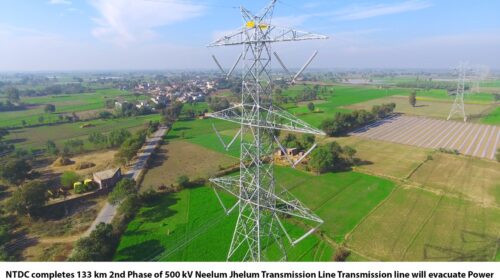Power production in Pakistan rose to a historic high at 136,572 gigawatt-hours (GWh) in 2021, apparently helping the authorities to reduce burden of capacity payments to electricity producers.
Consumers, however, paid a price for the growth in power production as the cost of energy spiked 72.4% to Rs8.24 per unit (kilowatt-hour) in the winter month of December.
Energy production increased 10.6% to a record high of 136,572 GWh in the year ended December 2021 compared to 123,447 GWh in the preceding year, a research house reported on Friday, citing National Electric Power Regulatory Authority’s (Nepra) data.
“Power production scaled up to new highs mainly due to accelerated economic activities in the country,” Ismail Iqbal Securities Head of Research Fahad Rauf said while talking to The Express Tribune.
Besides, the government’s policy to charge a lower tariff on consumption of additional electricity during winter months this season compared to the same period of previous year “also resulted in an increase in power consumption,” he said.
In addition to that, the widening gas shortfall in winter forced bulk consumers like factories to bank on power supplies from the national grid instead of drawing electricity from their own captive power plants, he pointed out.
The revised economic growth rate of 5.4% for the preceding fiscal year, which ended on June 30, 2021, compared to the provisional growth rate of 4% also indicates why electricity generation increased in 2021.
The growth trend suggested that Pakistani businesses and factories ramped up their production activities, which became possible with higher electricity consumption, said Rauf. “Power consumption is a strong indicator of economic performance of the country. The industrial sector mainly consumed more electricity to step up the production of goods.”
The agriculture sector also consumes electricity, notably for running tube wells. However, a significant number of tube wells have now shifted to the off-grid solar power system with the support of government’s financing schemes. Off-grid power is not counted in Nepra’s data. Rauf was of the view that Pakistan was expected to achieve economic growth in the range of 4-5% in the current fiscal year, maintaining the recent growth trend. “As a result, power generation is expected to remain at higher levels.”
Read NEPRA notifies Rs0.99 per unit cut
Coordinated fiscal and monetary policies of the government and central bank have helped the economy to come out of the Covid-19 shock in a V-shaped recovery.
“This trend is also reflected in the significant growth in power production in the period under review,” the research head said.
Under the policies, the government extended incentives to small and medium enterprises (SMEs) and provided cash to the poor. Similarly, the central bank announced a number of support schemes for investment, salary disbursement and bank loan rescheduling. These measures made financing available for businesses and people and helped expand the economy.
At present, Pakistan has surplus installed power production capacity. Though the government makes capacity payments to the power plants which remain idle, the increase in power production has helped slash capacity payments to some extent.
Energy cost
Along with the increase in electricity output, the cost of energy shot up after authorities opted to import expensive furnace oil, coal and liquefied natural gas (LNG) for electricity production. This came despite high inventories of oil with refineries in the country.
Rauf pointed out that the cost of imported gas (LNG) and coal surged 100% over the past one year, which primarily contributed to the rise in power tariff. Furnace oil was also consumed in power plants but its share remained low at 4% in December 2021 compared to over 24% for coal and 14% for re-gasified LNG.
Power generation based on furnace oil cost Rs22.3 per unit in December while the cost of RLNG-based electricity came in at Rs17.8 per unit. Coal-fired power production cost Rs13.3 per unit.







